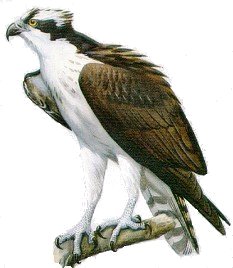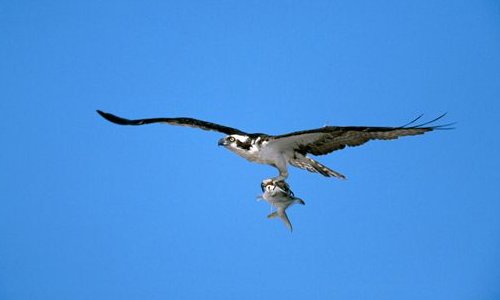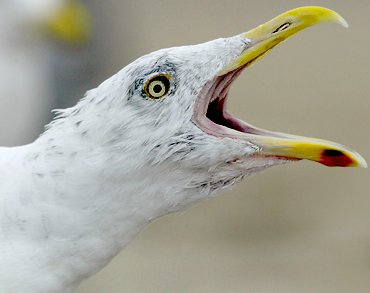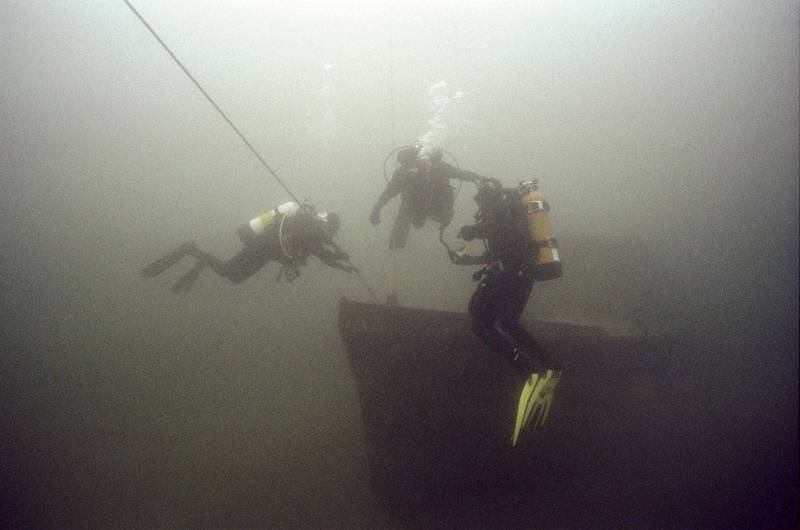Osprey

Ospreys, or "Fish Eagles", Pandion haliaetus, are fairly common along shorelines, marshes, and larger inland waterways. They dive for fish, catching them with their talons - which is quite a sight to see. At the last moment in its headlong plunge, the bird pivots to strike the water feet-first.
At 22", wingspan 54", Ospreys are smaller than eagles, but larger than hawks, and form their own family. Once threatened by DDT, which thins the shells of their eggs and makes them susceptible to breakage, Ospreys have made a great comeback and may be seen around almost any salt marsh. They nest in trees, or on special platforms that are erected for them. Several nesting pairs of Bald Eagles also live in the region.

Bald Eagles, much larger than Ospreys, with an all-white head and neck, are making a recovery. Don't be too surprised to see one!


